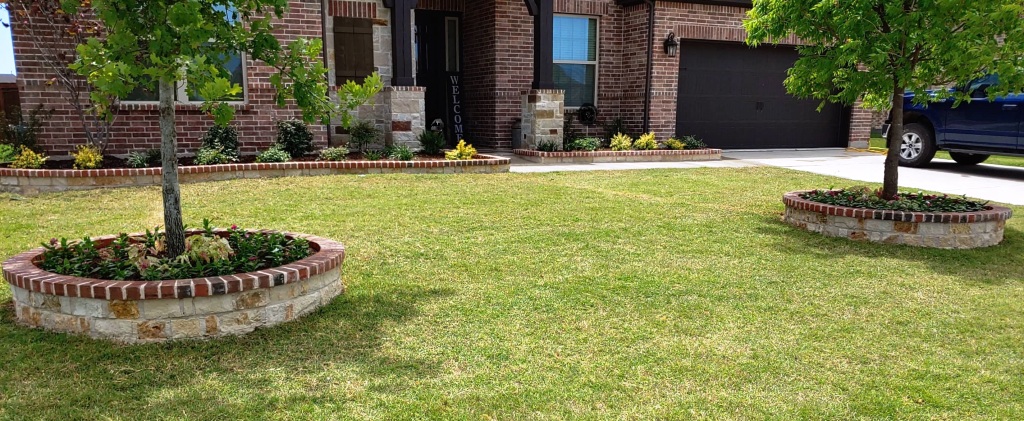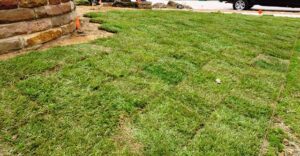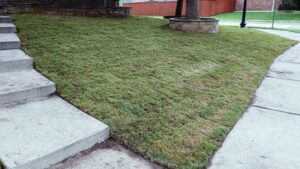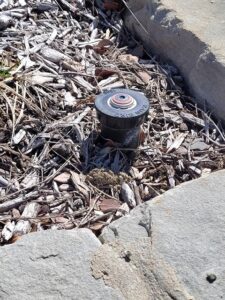
solvida
How to Water a Lawn in North Dallas
While every lawn is different and will demand a degree of customized care, every lawn is similar in that it will require regular watering. Whether you are watering with sprinkler heads, a drip line, or a hose, every lawn in North Dallas will require roughly 1 inch of water per week. However, depending on your sod type, the grade of your lawn, and the type of soil, you might need to adjust your watering. We have outlined these variables below to help you know how to water a lawn in North Dallas.
Lawn Watering Considerations
Soil Type
Depending on the type of soil in your yard, water will be absorbed at a different rate.
- Sandy Soil: Sandy soil is exactly as it sounds, very sandy. Sandy soil is porous and drains quickly. This type of soil is excellent for drainage, but it can be a challenge for lawn watering as some of the water is draining faster than the grass can absorb it. This type of soil is not commonly found in North Dallas.
- Loamy Soil: Loamy soil is somewhere in between sandy and clay soil, an ideal soil for installing sod grass. Loamy soil both retains moisture and facilitates efficient drainage.
- Clay Soil: Clay soil is dense and compacts easily. Due to this density, clay soil fills with water, drains slowly, and causes water waste through runoff. This type of soil is found in most newer North Dallas lawns, so we’ll reference the clay soil type to answer the questions in this post.
Yard Slope
The slope or grade in different areas of your yard will also help determine how much of your water is getting to the grass roots and how much is running off.
- Flat: If you have an area of your yard where the terrain is flat, the water will likely stay in place longer. This means that you can water for longer periods with less waste compared to yards with more of a slope. You should plan to run 1–3 watering cycles in these areas.
- Slight Slope: Areas of your yard with a slight slope will cause a bit more runoff and water waste compared to flat terrain. Plan to run 2–4 watering cycles in these areas.
- Severe Slope: If there is an area of your yard with a severe slope, you can expect that a good portion of the water it receives will run off and be wasted after a certain period of time. To combat this, we recommend running 3-5 watering cycles in these areas.
Type of Irrigation
The type of irrigation output you have will also affect how to water your lawn in North Dallas.
- Spray Type Sprinkler Heads: The spray-type sprinkler head is the most common irrigation head for smaller, residential lawns in North Dallas. It is available with an adjustable or fixed nozzle and a variety of flow options. For this reference, a spray-type sprinkler head emits about 1.3 gallons per minute (GPM) of water on average. This type of sprinkler head is found in most newer North Dallas lawns, so we’ll reference the spray type sprinkler head to answer the questions in this post.
- Rotator Type Sprinkler Heads: A rotator-type sprinkler head “rotor” is more efficient than a spray-type sprinkler head. It is available with an adjustable or fixed nozzle and a variety of flow options. For this reference, a rotator-type sprinkler head emits about 0.37 gallons per minute (GPM) of water on average.
- Dripline: The dripline emitter is the most efficient way to irrigate lawns and landscapes today and is available in a variety of flow options. For this reference, a drip line emits about 0.6 GPH gallons per hour (GPH) of water on average. Most residential homes in North Dallas might see drip irrigation used within a parkway lawn area or to water landscaping plants installed in a planting bed.
Grass Type
The following 3 warm-season grasses don’t have a significant difference in watering needs, but matching the right grass type to the amount of sun exposure your property receives will be crucial.
- Bermuda Grass: A Bermuda lawn needs 6-7 hours of sunlight, has a moderate growth habit, and requires between 1-1.4 inches of water each week. This grass type is found in most newer North Dallas lawns, so we’ll reference Bermuda grass to answer the questions in this post.
- St. Augustine Grass: St. Augustine, the most shade-tolerant of all the warm-season grasses with a very recognizable wide blade, requires 3–4 hours of sunlight each day. St. Augustine also has an incredibly fast-growing habit (considered invasive) and requires 1 inch of water each week.
- Zoysia Grass: Zoysia has become a very popular sod in North Dallas due, in large part, to its better shade tolerance compared to Bermuda. Zoysia needs between 4-5 hours of sunlight and approximately 1 inch of water each week. Zoysia grows more slowly than the other warm-season grasses, requiring less frequent mowing.


How many minutes a day should I water my lawn?
To achieve 1 inch of water per week, you should water your lawn one day each week for 20–30 minutes with a spray-type sprinkler head. If you have a sloped yard, you will need to run this in multiple cycles. For example, if 5 minutes into the cycle, you observe water running off the lawn, set your system to run for 5 minute cycles, then 5 minutes again 30–60 minutes later, and continue this until you achieve the 20–30 minute watering cycle.
What is the best method to water grass?
Grass, like any plant, will grow its strongest and deepest roots while searching for nutrients. The best way to water grass is to use the infrequent and deep watering method. You need to allow your grass to go several days without water until it becomes very thirsty. Once it’s feeling starved, the roots will stretch out, desperate to reach any water available. At this point, you really indulge the soil by giving it a thorough soaking. Following this practice will create a drought-tolerant lawn.


What days can I water my yard?
Most newer North Dallas subdivisions have city watering guidelines. These guidelines allow for watering your lawn on specific days and at specific times each week. For reference, most cities set the days to water your yard to coincide with the day of city garbage pick-up. Check with your city before programming your irrigation controller to water your lawn automatically.
Is it best to water grass daily?
No, it is not best to water the grass daily. It is best to water grass deeply and infrequently, developing a stronger and longer-reaching root system. This also results in a more drought-resistant lawn. Overwatering will kill grass much faster than underwatering.


Do I need to water my grass in winter?
During the winter season, your grass will be dormant and require no scheduled watering. However, we recommend watering your lawn and plants just prior to a hard freeze. Having water within the root system will actually help protect plants from Texas winter freezing temperatures.
Is it better to water my lawn at night or morning?
Early morning, when dew forms, is the best time to water your lawn. If grass is watered at night and not allowed to dry, a fungus or other disease may develop.